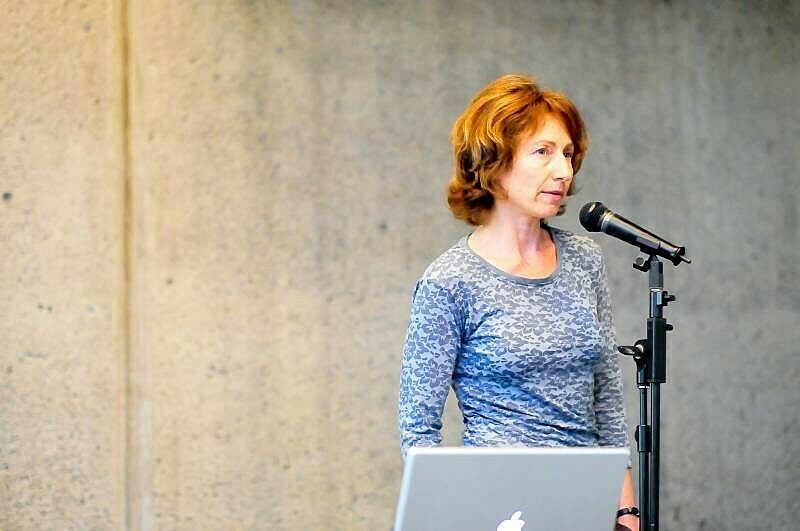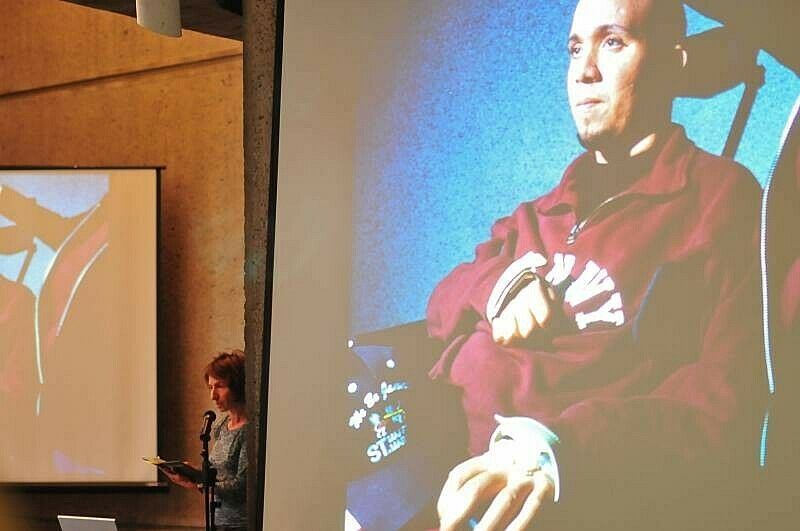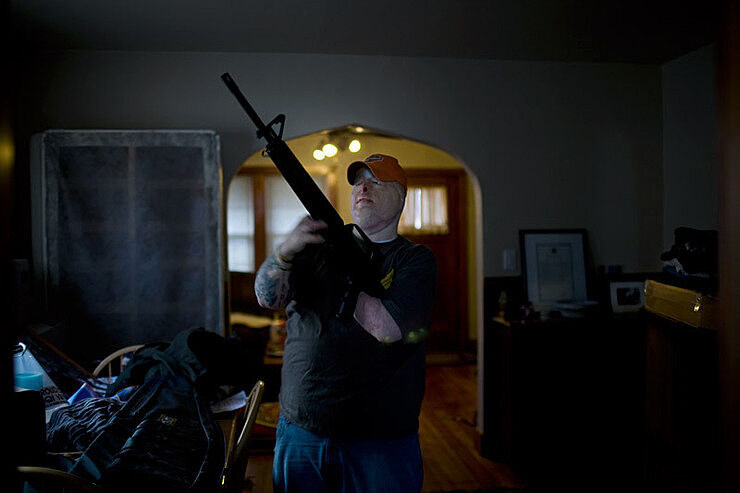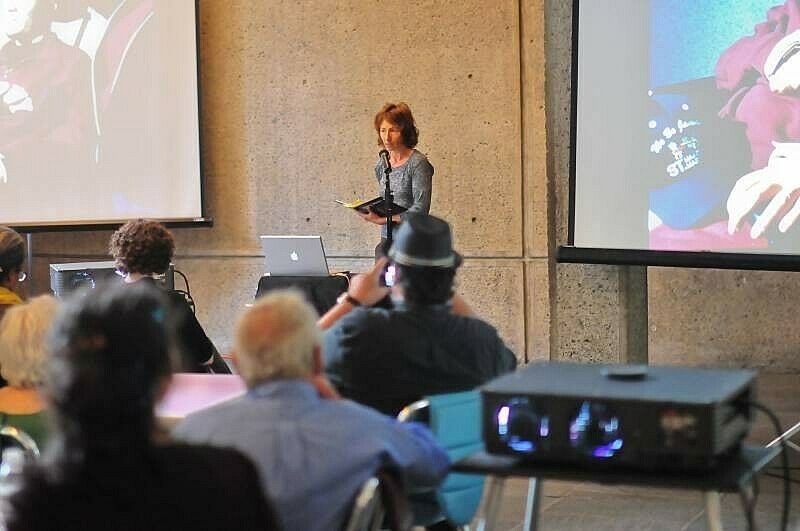Bringing the War Home: Artist Nina Berman Discusses her Photographs and Video of American Veterans and Military Culture
Jun 7, 2010
On May 28, for the final public program of the Biennial, documentary photographer Nina Berman discussed her ongoing exploration of both the individual and societal implications of the United States's involvement in war. Her presentation, which coincided with Memorial Day weekend, consisted of both new and previously shown photographs and video.
The artist began her program reading some excerpts from interviews she conducted for her 2004 book, Purple Hearts, a collection of portraits and interviews with American soldiers wounded in Iraq. Berman then premiered a documentary specifically made for the program, which presented a selection of veteran portraits and quotes adapted from Purple Hearts. The artist described her interest in the interplay between the empathetic portraits of the young, wounded veterans and the soldiers's own descriptions of their war experience. Most of the young men spoke reverently about their time in combat, despite being critically wounded, an attitude the artist admitted is hard to fathom from a civilian's perspective. Watch a slideshow of some portraits from Purple Hearts.
Berman then presented and described in detail two of her photographic series. The artist first discussed Marine Wedding, which was shown in 2010 and documents the postwar life of former Marine sergeant Ty Ziegel who was seriously disfigured by a suicide bomber in Iraq. The Biennial marks the first time the entire photographic narrative was exhibited in the United States. Berman showed one never-before-seen image from the project which depicts Ziegel's brother's pickup truck, the rear window of which is emblazoned with a "Give War a Chance" bumper sticker. The artist spoke about her decision to exclude it from Marine Wedding, explaining she didn't want to bias a viewer's reading of the images.
Berman is also very interested in what she sees as the United States's increased militarization post-9/11. The artist showed select images from her series Homeland, in which she documented military recruitments, simulations, memorials, and community events. The artist was most interested in the extent to which the culture of war and violence has infiltrated American communities. Watch a slideshow of some images from Homeland.
When asked by an audience member in the Q&A session why she was drawn to war photography, Berman cited an experience in 1987, when she was still working as a writer and accompanied some veterans on their first trip to Vietnam since the war. "I realized from that trip that clearly the war hadn't stopped for them," the artist explained. This realization is in part why the artist chooses to document the aftermath of war, rather than the war itself: "My interest is not in the combat moment…I actually think that part of our lack of understanding of war is that there is so much imagery of that combat moment and very little imagery of the years and years and of the ripple effect after."
This performance was part of My Turn, a new series which invites artists to create programs for the Whitney’s public that are an extension of and informed by their own artistic processes and methods.
By Sarah Meller, Education Assistant




